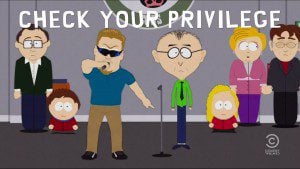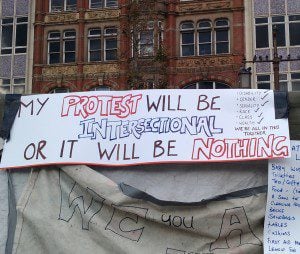I have suggested that we need wide open public spaces if we are thrive as a nation. We need a “public square” where all kinds of experiences and attitudes are brought to bear on creating our social and political culture. At the same time I work with a lot of people who don’t find my vision very helpful. It isn’t necessarily that they want to exclude anyone from the public space (although some do). It is just that they cannot bear the diversity of that space.
Charles Taylor has described a “supernova” of choices facing modern people in search of authentic human personhood. At least two things are operative in his understanding of our secular age. One is the personalization of authenticity, where human personhood is conceived of as a personal choice that must be continually reviewed, revised, or reaffirmed. The second is the vast array of possibilities that emerge in the universalization of cosmopolitan culture taking place through immigration, globalization, and the ubiquity of myriad streams of media. The options available only to a relatively elite urban class half a century ago now make their way to the most isolated nooks and crannies of the globe.
This can be quite freeing. “Wow, I have lots of choices about who I am to be!” Or it can be extremely frightening. “Wow, I have a million different ways to lose track of who I really am and who I was created to be!”
It is hardly surprising that social forces and movements have emerged trying to somehow limit both the personalization of authenticity and the array of choices available.
By limiting the personalization of authenticity I mean limiting the extent to which individuals are given a right to choose their identity without reference to the larger social structures in which they are embedded. The point group for this is the nuclear family. Traditionally parents exercised considerable power over their children’s identity – at least until the children became economically independent. (Emotional dependencies are far more difficult to track.)
But in the avant-garde of the secular age the personalization of authenticity is being moved to every younger ages, and strong social forces seem to seek to limit the power of parents to shape their children’s identity. Nowhere is this played out more than in the realm of education. Many children spend more time with their teachers than with their parents and siblings; a situation only exacerbated by high rates of divorce and a vast increase in working parents, complicated by blended families, and intensified by the insane increase in extra-curricular activities regarded as necessary for social and economic success.
At the same time schools are no longer asked to be just centers of teaching and training. They are tasked with character building and the formation of good citizens. Teachers aren’t supposed to just teach children, they are supposed to form them. Teachers take this role seriously, as they should, and have an intense concern for the well being of the children they teach. And that concern is naturally expressed through their personal understandings of human development, concerns often shaped by very different environments and professional education than that of parents.
Making this more complicated is the fact that public education is shaped at many different levels. Public schools are strongly shaped by local democratic forces in the form of local school boards. Teacher training is shaped by large national and even transnational ideological, ethical, and intellectual movements. And funding is shaped primarily by state political forces but with the federal government capable of using federal funds to exercise considerable influence on local schools.
In other words the schools themselves are centers of potentially conflicting understandings of human authenticity and conflicting agendas regarding their appropriate role in shaping identity.
And I haven’t even mentioned the fact that in a public school children of many different cultural backgrounds and religions freely mix and exchange ideas. This seems to me one of the strongest aspects of a public education, but for many parents it is yet another opportunity for their child to be exposed to choices that might lead him or her away from the identity formed by the (already blended, fractured, and distracted) family.
While the vast majority of classrooms are almost certainly managed by dedicated men and women solely focused on teaching children and looking after their welfare, It is hardly surprising that some families are suspicious of the influence on their children of the multiple, powerful, and often conflicting forces mentioned above. So they pull their children out of public spaces, or try reassert a monopolistic control of those spaces rather than allowing their children access to a supernova of choices unimaginable to their parents.
What is true of parents in relation to children is equally true of other social groups seeking to form the self-understanding of their members. Where social groups used to be a strong force within a limited number of options they are now a relatively weak force in the midst of a supernova of options. And so some such groups will seek to once again monopolize the public space. We see this happening with the rise of the Christian Conservatism.
Or as likely they will seek to withdraw into smaller, more homogenous, and more readily controlled social spaces. Only within such a diminished spaces can some individuals get a grip on their options and groups (including families) feel that they can shape their members identity.
At least some American religious groups have for a long time been engaged in resisting the personification of authenticity by withdrawing from the supernova of options found in the public space. Roman Catholics and Orthodox Jews are two examples, followed closely by fundamentalist Christians. All three groups have long since sought to provide alternatives to public schools where in any case they might not be welcomed. Mosques (at least in Texas) are rapidly moving in the same direction.
Recently the so-called “mainline” Protestants have also begun withdrawing from public education and creating “Seven Day a Week” churches that effectively isolate their congregations from the larger and more diverse society. And not surprisingly these same churches are also splintering into smaller sects that seek to insure the integrity of Christian identity by limiting the number of theological, ethical, liturgical, or organizational choices of their constituents. They may be willing to engage in public discourse about the shared concerns of a diverse society. But they prefer to do it from within their ecclesial strongholds rather than in the open public square. They sense, perhaps rightly, that (to use a allegory by G.K. Chesterton) for them freedom comes only when the possibility of self-annhialation in the supernova of choice is blocked off.
Those of us who wish to engage in dialogue across the diversity of ways of being human, and of understanding what it means to be free, will need to find ways for both the voices from the wide open public spaces and the voices of those who find their freedom within boundaries to be heard. Which is the hard part of the American experiment in what it means to be human











